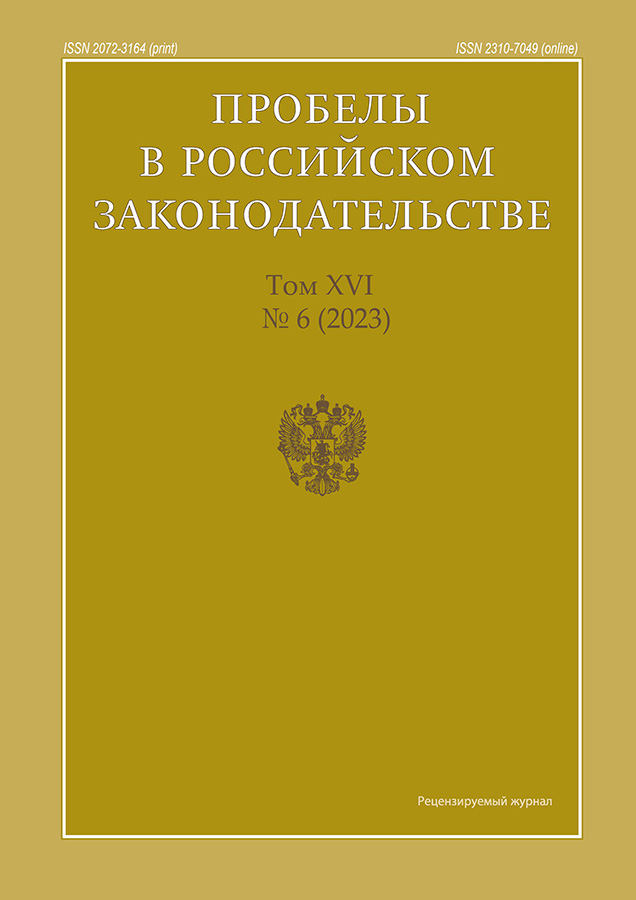Micro-Traces (Micro-Objects) in Criminology: Concept, Classification, Methods and Methods of Detection, Fixation, Seizure and Research
- Authors: Lozinsky O.I.1
-
Affiliations:
- South Russian Institute of Management – Branch of the Russian Presidential Academy of National Economy of Public Administration
- Issue: Vol 16, No 6 (2023)
- Pages: 197-202
- Section: Criminal Law Sciences
- URL: https://journals.eco-vector.com/2072-3164/article/view/623610
- EDN: https://elibrary.ru/SXAQZC
- ID: 623610
Cite item
Abstract
The purpose of the study. The article analyzes aspects related to micro-traces (micro-objects) in criminology, their concept, classification, methods and methods of their detection, fixation, seizure and research. Conclusions. Micro-traces (micro-objects) may contain criminalistically significant information for the disclosure and investigation of crimes. The results of the study of micro-traces (micro-objects) (in the form of conclusions on forensic examinations) fix the legal facts essential to the criminal case. Micro-traces (micro-objects), if their relevance to the illegal act under investigation is justified during the forensic examination, are reasonably subject to inclusion in the materials of the criminal case as material evidence. The results of the forensic examination of micro-traces (micro-objects) (in the form of an expert opinion), allow the investigator (inquirer): it is more reasonable to present the investigative situation in the case and conduct more reasoned version work on it; to increase the effectiveness of investigative actions, as well as the significance of the evidence obtained during their production. Within the framework of the conducted research, the author's definition of micro-objects is formulated. Within the framework of the study, based on the results of the analysis of existing classifications, taking into account the main provisions of forensic investigation, a generalized classification of micro-objects in the author's processing is proposed.
Keywords
Full Text
About the authors
Oleg I. Lozinsky
South Russian Institute of Management – Branch of the Russian Presidential Academy of National Economy of Public Administration
Author for correspondence.
Email: oleg.lozz@yandex.ru
SPIN-code: 3389-3371
Scopus Author ID: 1207162
Cand.Sci.(Law), Associate Professor of the Procedural Law Department
Russian Federation, Rostov-on-DonnReferences
- Vander M.B. The use of microparticles in the investigation of crimes // Expert practice. 2022. No. 4. pp. 13-17.
- Ishchenko E.P. A general view on forensic investigation // Bulletin of the East Siberian Institute of the Ministry of Internal Affairs of Russia. 2019. No. 3 (90). pp. 146-156.
- Kochubey A.V. Microobjects as a source of evidentiary information // Bulletin of Criminalistics. 2021. No. 1. pp. 68-71.
- Mailis N.P. Microtrassology: problems of development and improvement as a scientific direction // Bulletin of the Moscow University of the Ministry of Internal Affairs of Russia. 2014. No. 3. pp. 56-60.
- Trubitsyn R.Yu. To the question of the modern classification of micro-objects in criminalistics // Forensic examination. 2022. No. 2. pp. 49-54.
- Faleeva T.G. Human footprints as an object of DNA identification // Bulletin of the I.I. Mechnikov Northwestern State Medical University. 2017. Volume 9. No. 2. pp. 78-84.
Supplementary files









